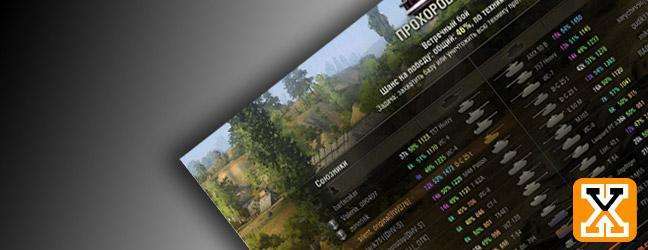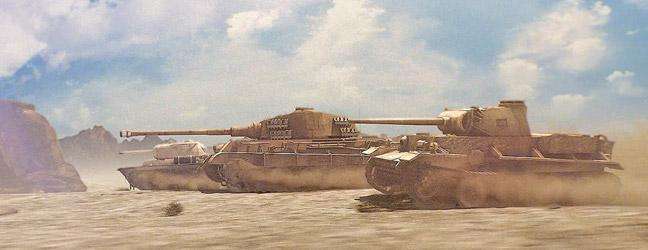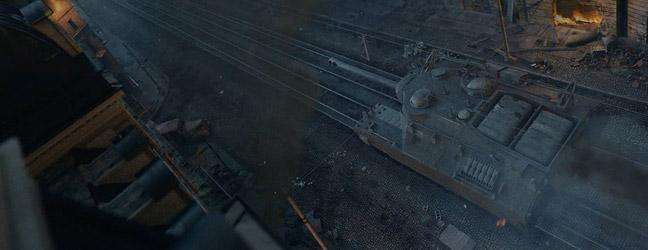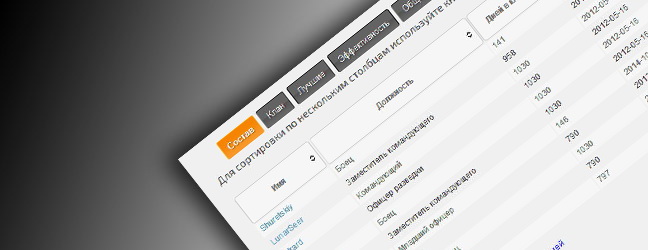Ferdinand - Elephant
Дата: 11.02.2011 16:05:45
admin: 
Ferdinand (it was named after its’ designer Ferdinand Porsche) was a heavy assault tank designed and built by Nibelungenwerke, especially for the needs of the Eastern Front. The prototype was based on Porsche’s Tiger - VK 4501(P) which proved to be prone to mechanical failures and was rejected in favour of Henschel’s prototype. First proposal was to convert 90 of the pre-production chassis for another project into carriers for 150mm or 170mm heavy howitzers as well as 210mm heavy mortar.
On September 22nd of 1942, it was ordered that chassis were to be converted to heavy assault tanks armed with 88mm PaK 43/2 L/71 gun and on November 30th of 1942, first design was ready. On March 19th of 1943, the first fully completed Ferdinand unit was presented to Adolf Hitler on the testing grounds at Ruegenwalde. Hitler himself was very pleased with it. He ordered to speed up the production of Ferdinand for upcoming summer offensive. From April to May of 1943, original 90 of VK 4501(P) chassis were converted to Ferdinands by Nibelungenwerke in St. Valentin, Austria with the hard work of the dedicated workers. Conversion consisted of various modifications. Two original Porsche Type 101/1 engines were replaced with proven Maybach HL 120 engines. New engines were mounted in the central section of the hull, allowing the superstructure (produced by Alkett) to be mounted in the rear. The superstructure weighted 15000kg.
Also additional armor plates, that weighted 4500kg were bolted to the hull as well. Ferdinands were armed with powerful 88mm PaK 43/2 L/71 gun and had very thick armor ranging from 80mm side armor to 200mm frontal armor. Additional 7.92mm MG34 was carried inside for local defense.On May 8th, all Ferdinands left the factory without the protective shield around the mounting of the gun and by May 13th, Krupp shipped some to the Ferdinand units already stationed in the East. Inadequate number of shields was produced and some Ferdinands did not receive them. Each shield weighted 3500kg.
Ferdinand of Major Noak’s sPzJagAbt 654, Kursk, July 1943.
Ferdinands were assigned to schwere Heeres Panzerjager Abteilung 653 and 654 (each was to be equipped with 45 Ferdinands), in preparation for the Kursk offensive (Unternehmen "Zitadelle") in July of 1943. Both units were formed in April of 1943 at Bruck. sPzJagAbt 653 was formed from personnel from 197th Sturmgeschuetz Abteilung.
sPzJagAbt 653 was commanded by Major Steinwachs, while sPzJagAbt 654 by Major Karl-Heinz Noak, both (along with Sturmpanzerabteilung 216 - equipped with Brummbars) formed the 656 sPanzerjager Regiment commanded by Lieutenant-Colonel Jungenfled. In fact, sPzJagAbt 653 had 45 Ferdinands, while sPzJagAbt 654 had 44 Ferdinands as a single one was still being tested at Kummersdorf. In order to provide Ferdinands with ammunition, six Panzer IIIs were converted into Munition Schleppers attached to the Ferdinand units. 656 sPanzerjager Regiment was part of 41st Panzer Corps (under command of General Harpe) of Army Group Center for the upcoming operation.
On the first days of action, Ferdinands were disaster due to the technical problems (few were lost because of the fuel line fires), the lack of adequate support and the most important the lack of a self-defense weapon (they were easy targets for Soviet infantry). Many Ferdinands were destroyed either by their crews after being immobilized (by combat damage or mechanical problem) or by Soviet infantry and artillery as well as by SU-152 "Zwieroboj" heavy mechanised guns. It was recorded that some Ferdinand’s crews (ex. Major Noak’s crew) used to fire their 7.92mm MG34 machine guns through the barrel of main 88mm gun while others mounted their 7.92mm MG34 underneath the gun, in order to fire at the enemy infantry units. Temporary field-made solution was the rear mounted platform for Panzergrenadiers, but it only resulted in heavy casualties among them. During the Kursk offensive until November of 1943, Ferdinands from sPzJagAbt 653 destroyed 320 Soviet tanks and lost 13 Ferdinands, while entire 656 sPanzerjager Regiment destroyed 502 Soviet tanks and 100 other vehicles. Ferdinands proved to be very effective when employed behind the lines.
Ferdinand on the way to the front, Kursk, July 1943.
Report from July 19th of 1943 by Platoon commander Boehm:
"On the first day of action, we successfully engaged bunkers, infantry, field and anti-tank artillery positions. For three hours our guns (Ferdinands) fought in the cavalcade of enemy fire and proved to be immune to enemy fire !. In the evening of the first day, first enemy tanks were destroyed, while others retreated. Crews of field and anti-tank guns run away after firing few uneffective shots against our guns (Ferdinands). In first engagements our regiment (656 sPanzerjager Regiment) destroyed numerous artillery positions, bunkers as well as 120 enemy tanks…"
After the Kursk offensive, commanders reported about their problems encountered while using the Ferdinands. The main problem was the lack of machine gun in the hull for self defense made, making the Ferdinands vulnerable to attacks of enemy infantry and anti-tank units. Other features such as: the gun mount (lack of traversing turret), drive system (Porsche’s Tiger - VK4501(P)) and lack of power (weight/engine power ratio) were also giving trouble to their crews.
Ferdinand and Soviet infantry, Kursk, July 1943.
In October of 1943, 50 survivors were sent back to the factory for badly needed repairs and pre-planned modernization. Modernization consisted of the installation of a MG34 in the hull, improvement of armor protection, installation of wider tracks and installation of commander’s cupola (developed from that of Stug III Ausf G), which provided improved visibility. Most of the Elephants were partially covered with Zimmerite, an anti-magnetic paste. Modernization was made in February and March of 1944 by Nibelungenwerke in Austria and modified Ferdinands were renamed Elephants. Officially Ferdinands were renamed Elephants in general order dated May 1st of 1944.
After their modernization, 48 Elephants were grouped into schwere Heeres Panzerjager Abteilung 653 and part of it was transferred to Italy in late February of 1944. They arrived in Rome by train via Salzburg, Innsbruck, the Brenner Pass , Trento and Florence on February 24th of 1944. They saw combat at Nettuno, Anzio and Cisterna as early as March 1st of 1944. sPzJagAbt 654 was moved to France in late 1943 and rearmed with Jagdpanthers. In April of 1944, part of sPzJagAbt 653 was transferred back to the Eastern Front. In Autumn of 1944, all existing Elephants were grouped into newly created unit - schwere Heeres Panzerjager Kompanie 614, sPzJagAbt 653 was re-equipped with Jagdtigers. sPzJagAbt 614 with some 13-14 vehicles saw service on the Eastern Front as late as early 1945 and eventually all remaining (4?) Elephants saw final service with Kampfgruppe "Ritter" in area of Zossen (south of Berlin) in mid April of 1945. When employed defensively in Italy and Russia, Elephants proved to be formidable opponents. As of January 1st of 1945, there were still 4 Elephants in service of which some took part in the defence of Berlin as part of Kampfgruppe Ritter.
Bergepanzer Tiger(P) / Bergetiger(P) / Berge-Elephant
From August to September of 1943, three of original VK4501(P) tanks (issued to sPzJagAbt 653) and in October of 1943, two retired Ferdinands were converted to Bergepanzer Tiger(P). Hulls were modified and mounted in the rear with a small superstructure (with the components of PzKpfw IV) and engines were moved to a central location. Bergetiger(P) was equipped with 2ton crane and no other special equipment.The only armament was the 7.92mm MG34 mounted in the superstructure.
Elephant proved to be very effective weapon when operating at long range, for example one Elephant knocked out Soviet T-34 at the range of 4.5 kilometers. Overall, Elephant was a very advanced design, which proved to be a superb defensive weapon with an enormous firepower. Today, there is only two existing Ferdinand/Elephants, one in Kubinka, Russia (captured at Kursk) and second in Aberdeen, USA (captured at Anzio).

Ferdinand (it was named after its’ designer Ferdinand Porsche) was a heavy assault tank designed and built by Nibelungenwerke, especially for the needs of the Eastern Front. The prototype was based on Porsche’s Tiger - VK 4501(P) which proved to be prone to mechanical failures and was rejected in favour of Henschel’s prototype. First proposal was to convert 90 of the pre-production chassis for another project into carriers for 150mm or 170mm heavy howitzers as well as 210mm heavy mortar.
On September 22nd of 1942, it was ordered that chassis were to be converted to heavy assault tanks armed with 88mm PaK 43/2 L/71 gun and on November 30th of 1942, first design was ready. On March 19th of 1943, the first fully completed Ferdinand unit was presented to Adolf Hitler on the testing grounds at Ruegenwalde. Hitler himself was very pleased with it. He ordered to speed up the production of Ferdinand for upcoming summer offensive. From April to May of 1943, original 90 of VK 4501(P) chassis were converted to Ferdinands by Nibelungenwerke in St. Valentin, Austria with the hard work of the dedicated workers. Conversion consisted of various modifications. Two original Porsche Type 101/1 engines were replaced with proven Maybach HL 120 engines. New engines were mounted in the central section of the hull, allowing the superstructure (produced by Alkett) to be mounted in the rear. The superstructure weighted 15000kg.
Also additional armor plates, that weighted 4500kg were bolted to the hull as well. Ferdinands were armed with powerful 88mm PaK 43/2 L/71 gun and had very thick armor ranging from 80mm side armor to 200mm frontal armor. Additional 7.92mm MG34 was carried inside for local defense.On May 8th, all Ferdinands left the factory without the protective shield around the mounting of the gun and by May 13th, Krupp shipped some to the Ferdinand units already stationed in the East. Inadequate number of shields was produced and some Ferdinands did not receive them. Each shield weighted 3500kg.
Ferdinand of Major Noak’s sPzJagAbt 654, Kursk, July 1943.
Ferdinands were assigned to schwere Heeres Panzerjager Abteilung 653 and 654 (each was to be equipped with 45 Ferdinands), in preparation for the Kursk offensive (Unternehmen "Zitadelle") in July of 1943. Both units were formed in April of 1943 at Bruck. sPzJagAbt 653 was formed from personnel from 197th Sturmgeschuetz Abteilung.
sPzJagAbt 653 was commanded by Major Steinwachs, while sPzJagAbt 654 by Major Karl-Heinz Noak, both (along with Sturmpanzerabteilung 216 - equipped with Brummbars) formed the 656 sPanzerjager Regiment commanded by Lieutenant-Colonel Jungenfled. In fact, sPzJagAbt 653 had 45 Ferdinands, while sPzJagAbt 654 had 44 Ferdinands as a single one was still being tested at Kummersdorf. In order to provide Ferdinands with ammunition, six Panzer IIIs were converted into Munition Schleppers attached to the Ferdinand units. 656 sPanzerjager Regiment was part of 41st Panzer Corps (under command of General Harpe) of Army Group Center for the upcoming operation.
On the first days of action, Ferdinands were disaster due to the technical problems (few were lost because of the fuel line fires), the lack of adequate support and the most important the lack of a self-defense weapon (they were easy targets for Soviet infantry). Many Ferdinands were destroyed either by their crews after being immobilized (by combat damage or mechanical problem) or by Soviet infantry and artillery as well as by SU-152 "Zwieroboj" heavy mechanised guns. It was recorded that some Ferdinand’s crews (ex. Major Noak’s crew) used to fire their 7.92mm MG34 machine guns through the barrel of main 88mm gun while others mounted their 7.92mm MG34 underneath the gun, in order to fire at the enemy infantry units. Temporary field-made solution was the rear mounted platform for Panzergrenadiers, but it only resulted in heavy casualties among them. During the Kursk offensive until November of 1943, Ferdinands from sPzJagAbt 653 destroyed 320 Soviet tanks and lost 13 Ferdinands, while entire 656 sPanzerjager Regiment destroyed 502 Soviet tanks and 100 other vehicles. Ferdinands proved to be very effective when employed behind the lines.
Ferdinand on the way to the front, Kursk, July 1943.
Report from July 19th of 1943 by Platoon commander Boehm:
"On the first day of action, we successfully engaged bunkers, infantry, field and anti-tank artillery positions. For three hours our guns (Ferdinands) fought in the cavalcade of enemy fire and proved to be immune to enemy fire !. In the evening of the first day, first enemy tanks were destroyed, while others retreated. Crews of field and anti-tank guns run away after firing few uneffective shots against our guns (Ferdinands). In first engagements our regiment (656 sPanzerjager Regiment) destroyed numerous artillery positions, bunkers as well as 120 enemy tanks…"
After the Kursk offensive, commanders reported about their problems encountered while using the Ferdinands. The main problem was the lack of machine gun in the hull for self defense made, making the Ferdinands vulnerable to attacks of enemy infantry and anti-tank units. Other features such as: the gun mount (lack of traversing turret), drive system (Porsche’s Tiger - VK4501(P)) and lack of power (weight/engine power ratio) were also giving trouble to their crews.
Ferdinand and Soviet infantry, Kursk, July 1943.
In October of 1943, 50 survivors were sent back to the factory for badly needed repairs and pre-planned modernization. Modernization consisted of the installation of a MG34 in the hull, improvement of armor protection, installation of wider tracks and installation of commander’s cupola (developed from that of Stug III Ausf G), which provided improved visibility. Most of the Elephants were partially covered with Zimmerite, an anti-magnetic paste. Modernization was made in February and March of 1944 by Nibelungenwerke in Austria and modified Ferdinands were renamed Elephants. Officially Ferdinands were renamed Elephants in general order dated May 1st of 1944.
After their modernization, 48 Elephants were grouped into schwere Heeres Panzerjager Abteilung 653 and part of it was transferred to Italy in late February of 1944. They arrived in Rome by train via Salzburg, Innsbruck, the Brenner Pass , Trento and Florence on February 24th of 1944. They saw combat at Nettuno, Anzio and Cisterna as early as March 1st of 1944. sPzJagAbt 654 was moved to France in late 1943 and rearmed with Jagdpanthers. In April of 1944, part of sPzJagAbt 653 was transferred back to the Eastern Front. In Autumn of 1944, all existing Elephants were grouped into newly created unit - schwere Heeres Panzerjager Kompanie 614, sPzJagAbt 653 was re-equipped with Jagdtigers. sPzJagAbt 614 with some 13-14 vehicles saw service on the Eastern Front as late as early 1945 and eventually all remaining (4?) Elephants saw final service with Kampfgruppe "Ritter" in area of Zossen (south of Berlin) in mid April of 1945. When employed defensively in Italy and Russia, Elephants proved to be formidable opponents. As of January 1st of 1945, there were still 4 Elephants in service of which some took part in the defence of Berlin as part of Kampfgruppe Ritter.
Bergepanzer Tiger(P) / Bergetiger(P) / Berge-Elephant
From August to September of 1943, three of original VK4501(P) tanks (issued to sPzJagAbt 653) and in October of 1943, two retired Ferdinands were converted to Bergepanzer Tiger(P). Hulls were modified and mounted in the rear with a small superstructure (with the components of PzKpfw IV) and engines were moved to a central location. Bergetiger(P) was equipped with 2ton crane and no other special equipment.The only armament was the 7.92mm MG34 mounted in the superstructure.
Elephant proved to be very effective weapon when operating at long range, for example one Elephant knocked out Soviet T-34 at the range of 4.5 kilometers. Overall, Elephant was a very advanced design, which proved to be a superb defensive weapon with an enormous firepower. Today, there is only two existing Ferdinand/Elephants, one in Kubinka, Russia (captured at Kursk) and second in Aberdeen, USA (captured at Anzio).
 News from the Front\Developers Blog\Ferdinand - Elephant
News from the Front\Developers Blog\Ferdinand - Elephant













